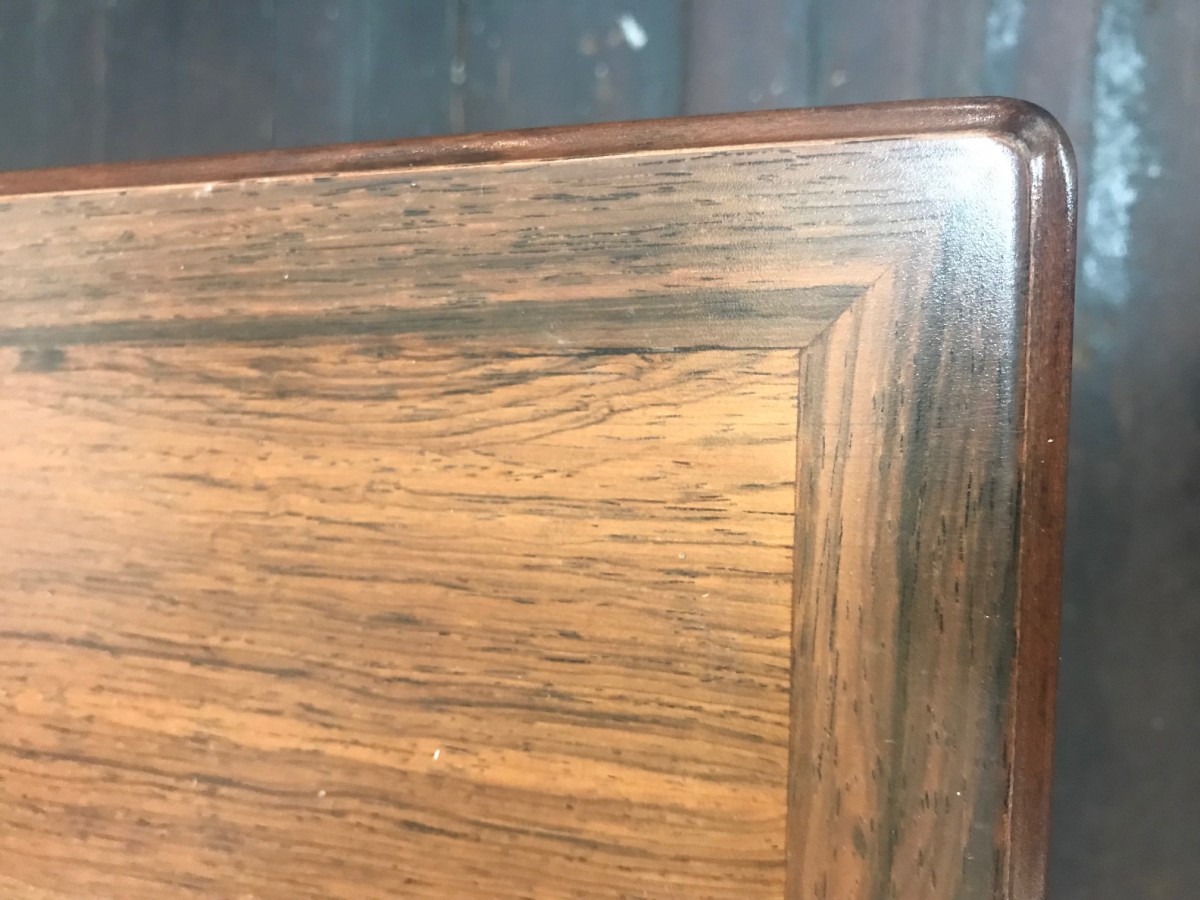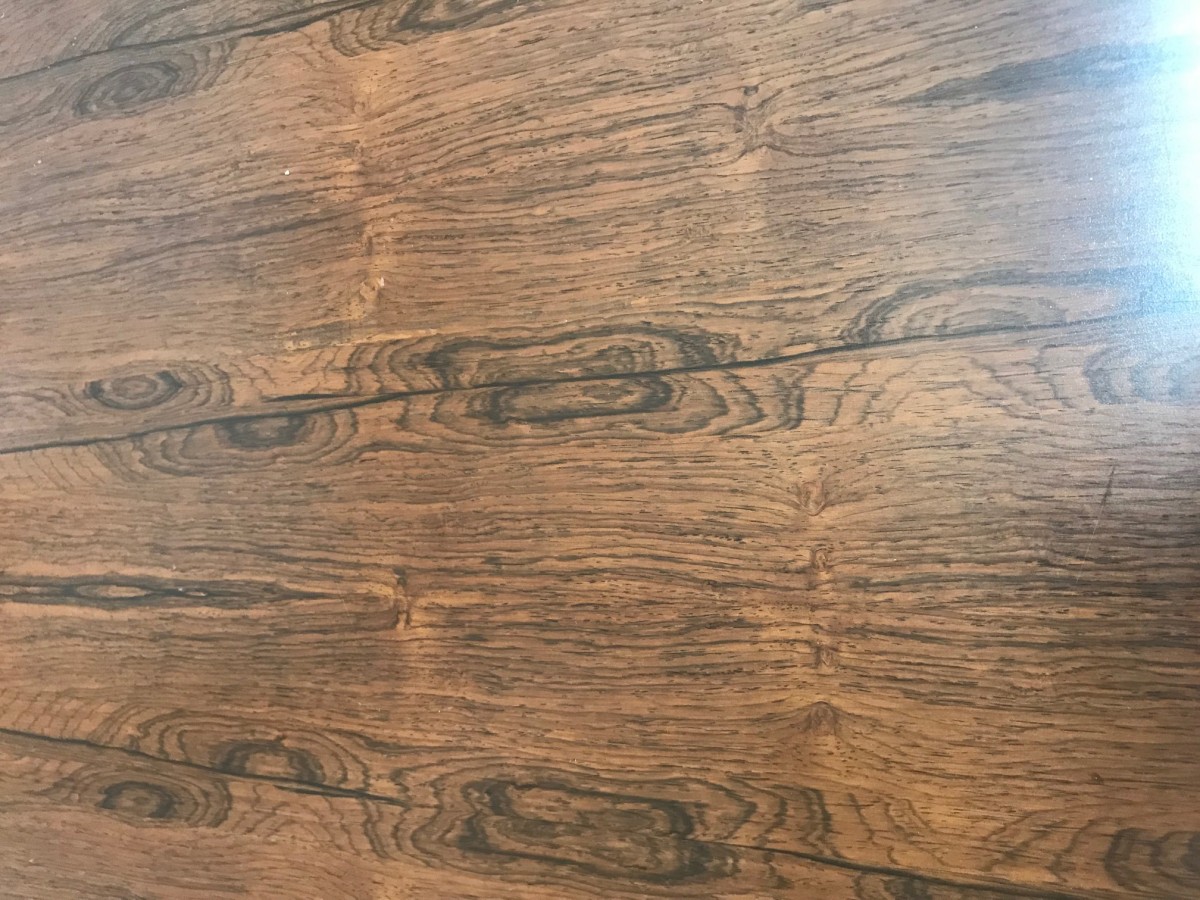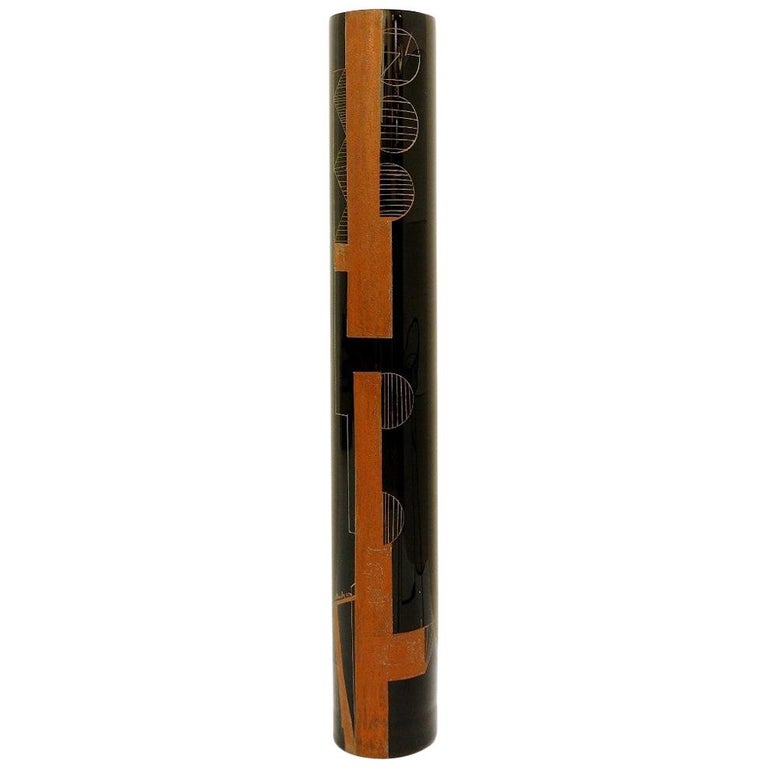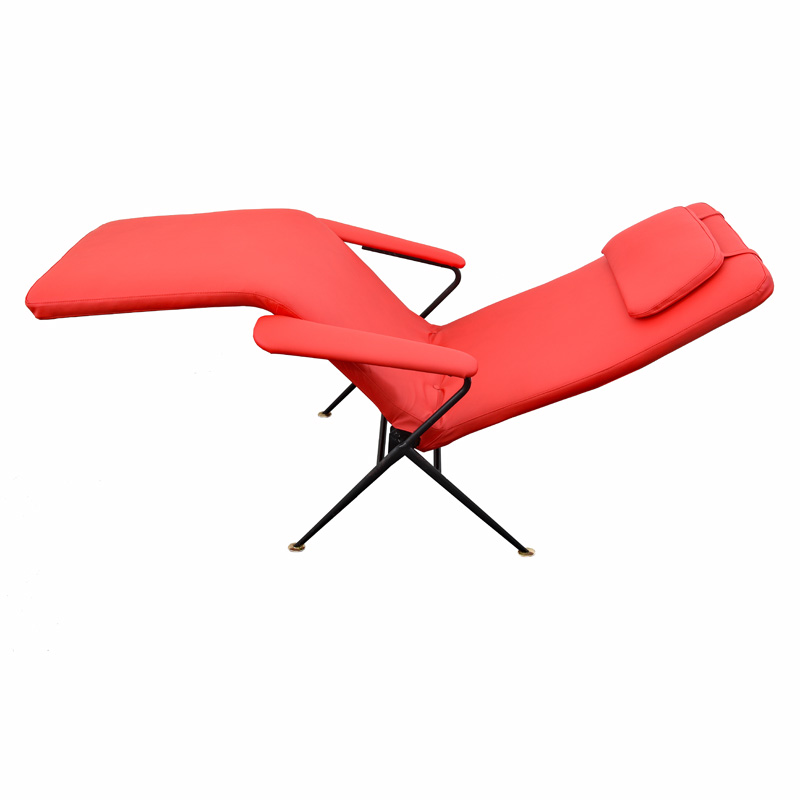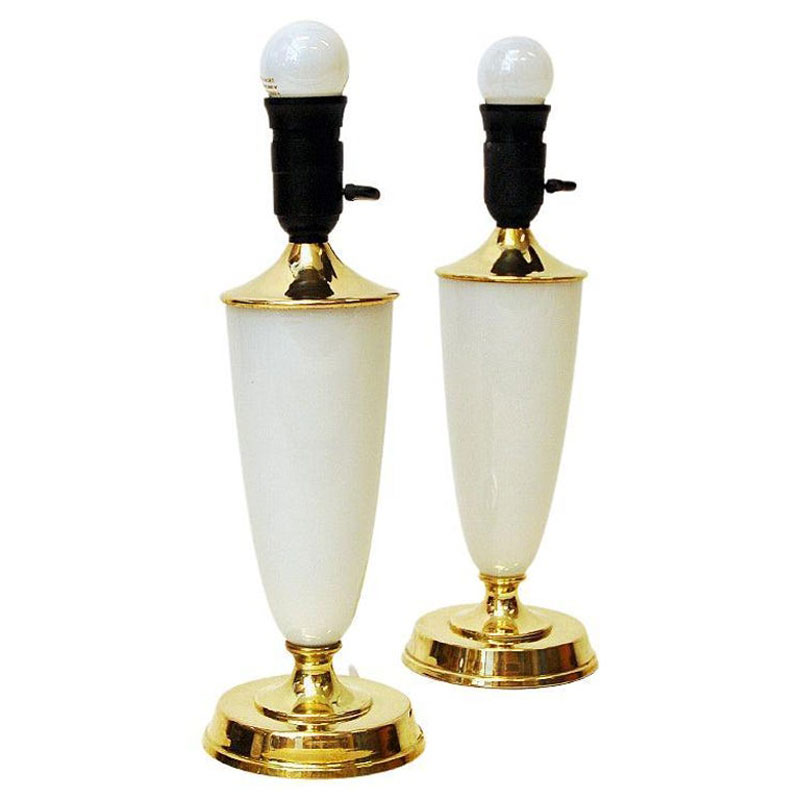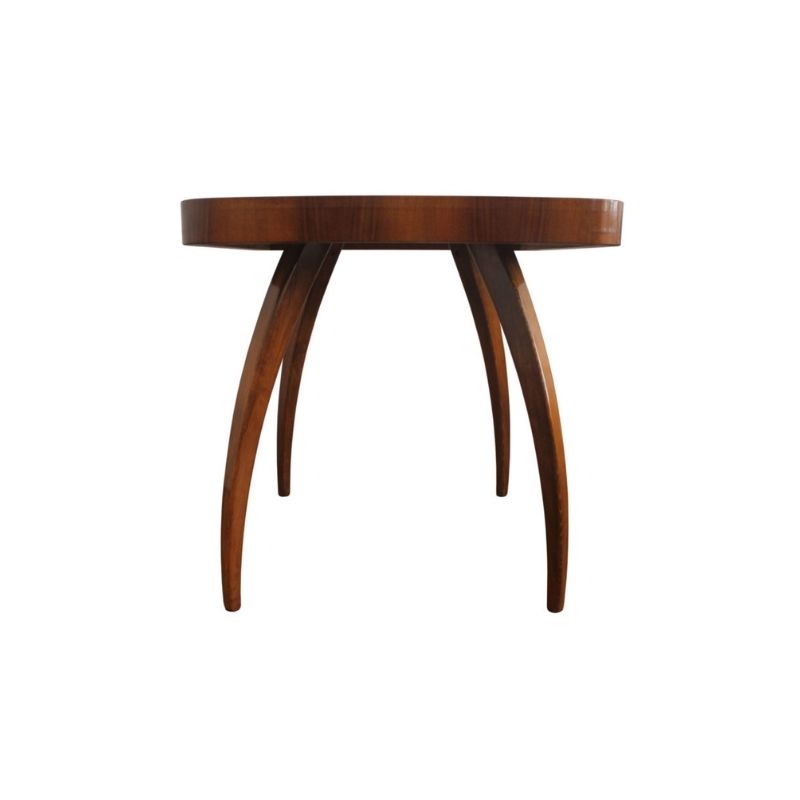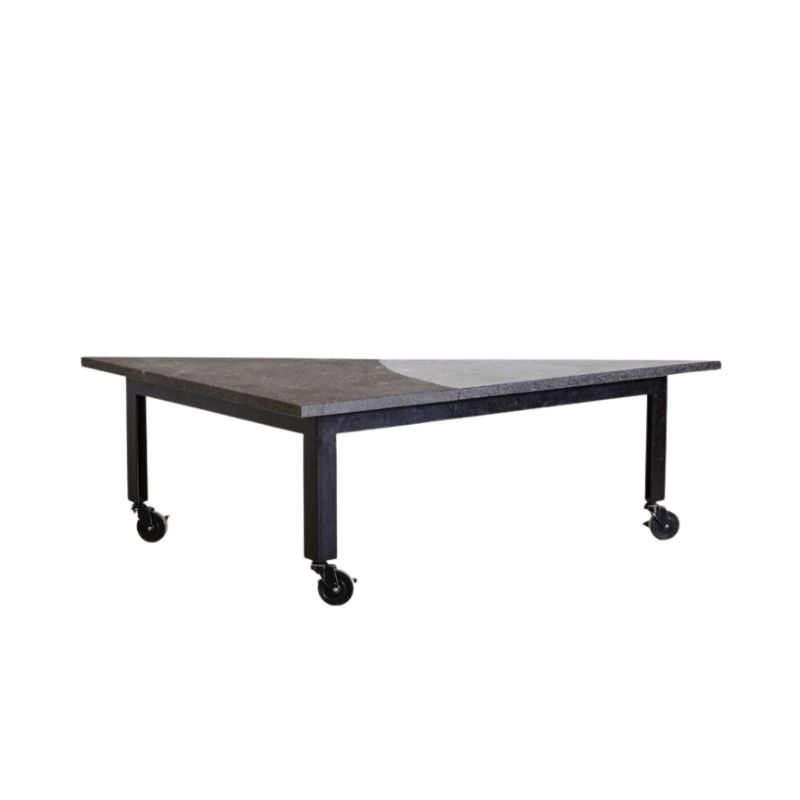The close-up photo seems to show what I have been calling rubberwood -- or rubber wood ? I've seen it used for folding chairs imported from -- where ? Asia ? The wide-spaced, speckled (intermittent) porous grain and yellow color are the cues, for me. Dark coloring I've not seen in this specie, but it wouldn't surprise me at all.
But that's just an ill-informed guess. Anyone ?
Yeah, I was instantly going with Brazilian 'R' wood. Not many woods produce a veneer with that kind of figuring. Seen some guitars in Ziricote that have similar figuring but I really don't think I've ever seen some vintage furniture in Ziricote. I guess there are some Sam Maloof pieces.
I'd like to see this rubberwood, though.
I would call it "Asian beech" for its color and its use as a common hardwood specie for chairs, bookshelf units, and other pieces. A folding chair I'm thinking of might have been sold by an importer like Pier One. I wonder if IKEA has ever used it.
But I need to know more . . .
The bookmatched veneers in the darker piece you show -- what is that furniture ? -- are unusual, in color and grain. I cannot say that I've ever seen rubberwood veneers.
Kyle,
Here you go:
http://www.hobbithouseinc.com/personal/woodpics/rubberwood.htm
The seats and tabletops of furniture like the set below, made in China, are usually rubberwood. This furniture has been very popular in the US for 20+ years with people who want an antiquey look at rock bottom prices and who aren't too concerned with long term durability. It gets yellower as it ages.
Well. I really don't know my rosewoods. The first example I saw and handled was red and black, more or less. So I've assumed that the wood always bears that unusual almost magenta hue -- or something like it. Walnut can fade to tan and even almost-blond. Would this table have appeared more reddish when it was young ?
Thanks for the comments on rubberwood. Yes, it's the same tree that produces latex:
SDR, read the Hobbit House article on the various rosewoods. Very informative and accurate, IMO. And, yes, rosewood is susceptible to color changes over time and environmental exposure.
http://www.hobbithouseinc.com/personal/woodpics/_discussion_rosewoods.htm
Rosewood and especially Brazilian rosewood is highly susceptible to hue change. It goes from dark almost magenta as you say all the way up to a very light yellow akin to an oak when UV damaged and everywhere in between. The red and black is normally what rosewood looks like when not freshly sanded and kept in a room without too much light exposure.
But as I've learned from here, it's very rare that the colour is a reliable way to determine a variety of timber.
I think as Leif says above, there is much more to identifying wood than just one facet. It's about gathering and weighing up all information and spotting red herrings, such as colour.
Interestingly a lot of finds I pick up/miss out on are obviously rosewood to me, but attributed to oak because of the similarity in figuring, especially when the rosewood is UV damaged.
If you need any help, please contact us at – info@designaddict.com


